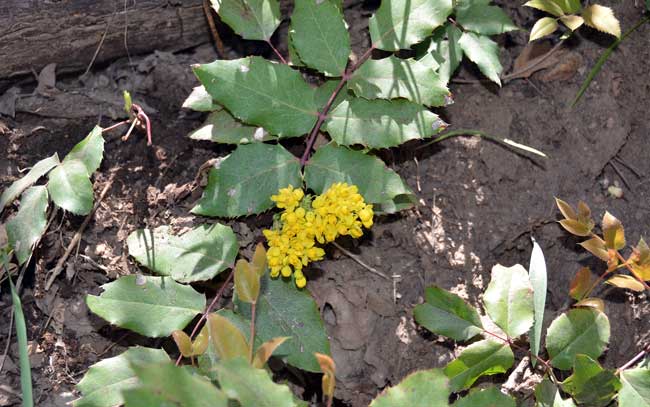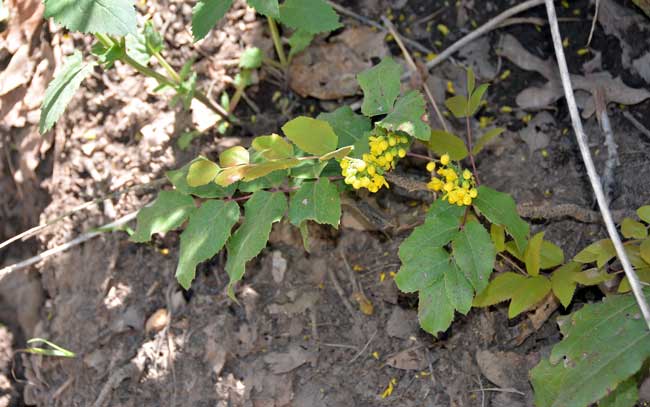Berberis repens, Creeping Barberry


Scientific Name: Berberis repens
Common Name: Creeping Barberry
Also Called: Creeping Mahonia, Oregon Grape, Truckee Barberry (Spanish: Yerba de la Sangre)
Family: Berberidaceae, Barberry Family
Synonyms: (Mahonia repens, Berberis aquifolium var. repens, Berberis sonnei, Mahonia amplectens, Mahonia pumila, Mahonia sonnei, Odostemon pumilus, Odostemon repens)
Status: Native
Duration: Perennial
Size:
Up to 2 feet.
Growth Form: Shrub or subshrub; evergreen; glabrous, without thorns or spines.
Leaves: Green; leaves dull on both sides, 5 to 7 foliate, side leaves ovate to elliptic petioles present, margins dentate.
Flower Color: Yellow; inflorescence raceme-like, multiple flowers up to 50, fruit a berry, blue, glaucous.
Flowering Season: April to June.
Elevation: 5,000 to 8,500 feet, lower elevations in California (1,000 feet).
Habitat Preferences: Primarily found in higher elevations in coniferous forests.
Recorded Range: In the United States, Berberis repens is found in the central and west in: AZ, CA, CO, ID, IN, MN, MT, ND, NE, NM, NV, OR, PA, SD, TX, UT, WA and WY. It is also native to Canada in Alberta and British Columbia. It is also represented in northern Mexico. In Arizona it is found primarily in the northern half of the state.
North America & US County Distribution Map for Berberis repens.
U.S. Weed Information: No data available.
Invasive/Noxious Weed Information: Berberis haematocarpa (=Mahonia) is listed as a prohibited species by the State of Michigan as Mahonia bushes are subject to attack by black stem rust.
Wetland Indicator: No data available.
Threatened/Endangered Information: The State of California has listed Mahonia sonnei (=Berberis repens), Truckee Barberry, as Endangered.
Genus Information: 12 species in Berberis throughout the United States, Canada and Mexico. 2 species in Berberis in Arizona.
The Plant List includes 1,022 scientific plant names of species rank for the genus Berberis. Of these 579 are accepted species names.
Comments: Also see in Southwest Desert Flora; Red Barberry, Berberis haematocarpa.
Creeping Barberry has one or more ethno-botanical uses identified at Native American Ethnobotany, University of Michigan, Dearborn.

